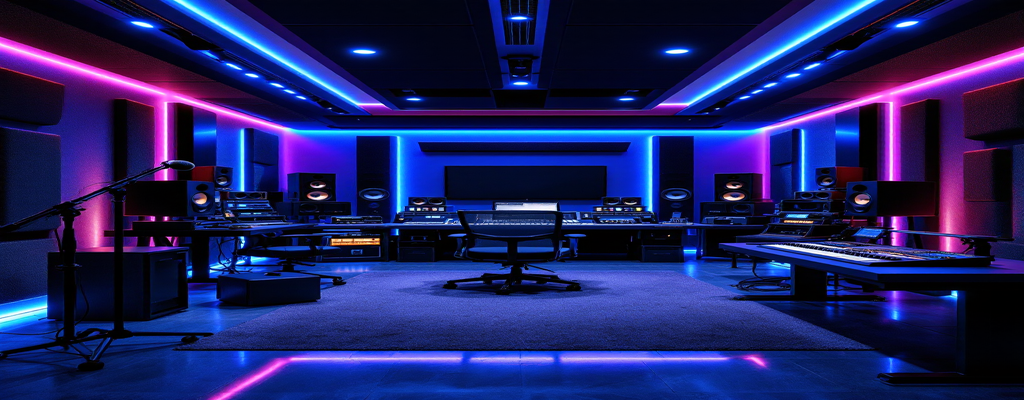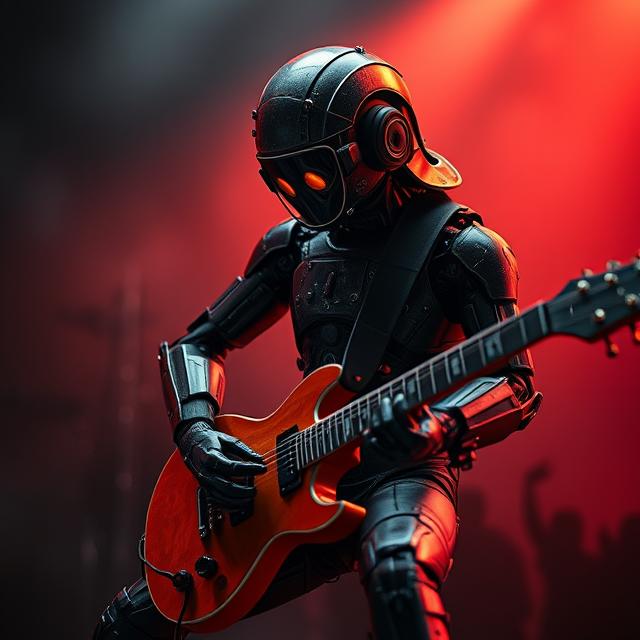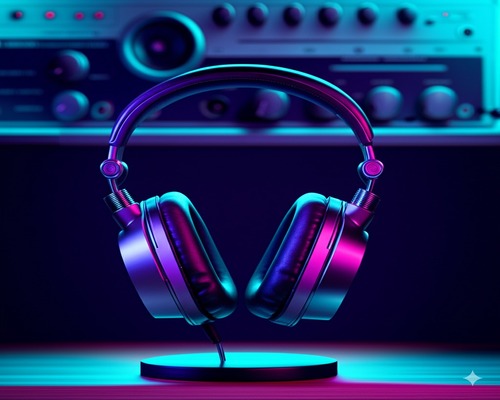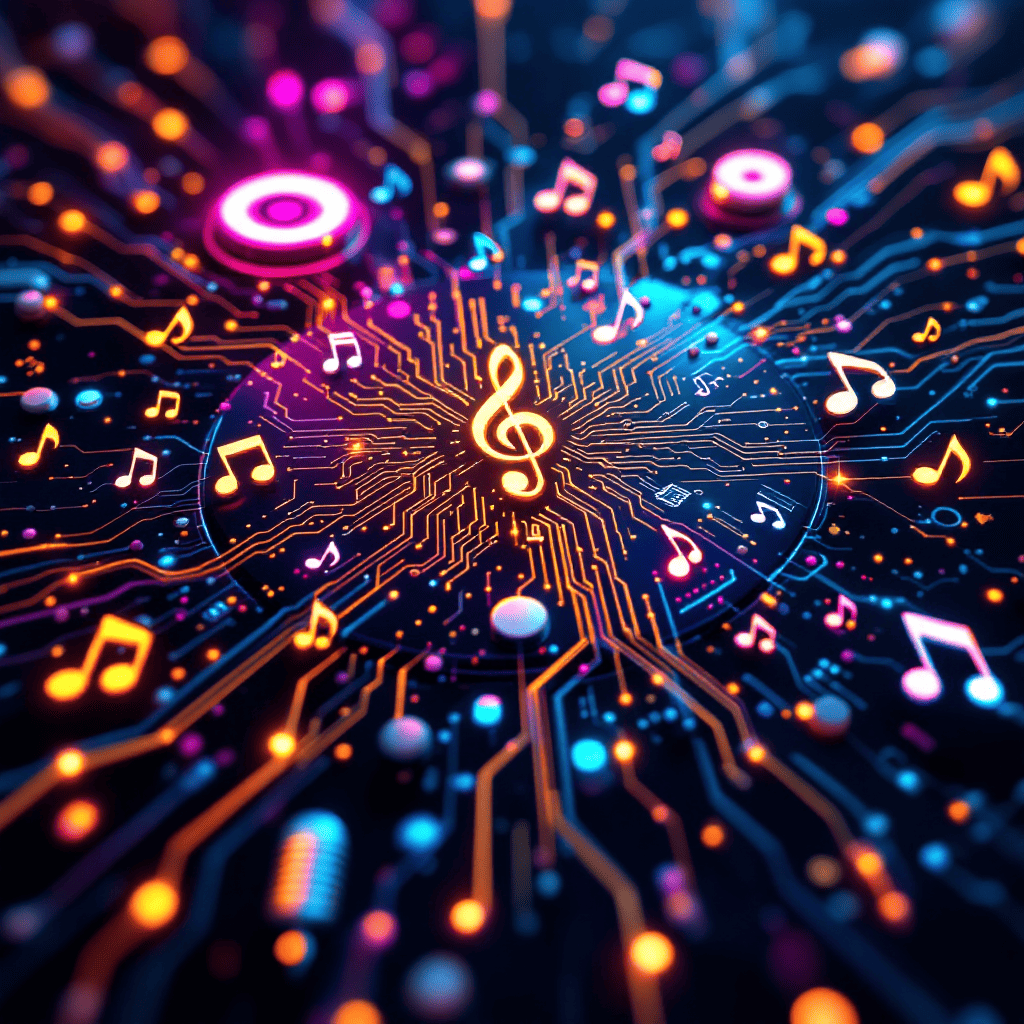
AI music prompts by genre are changing how people make music with AI. This guide shows you how to write better prompts for different music styles.
What Are AI Music Prompts by Genre?
AI music prompts by genre are simple instructions that tell AI exactly what kind of music you want. Instead of vague prompts that give you random-sounding music, genre prompts help you make songs that actually sound like rock, hip hop, or pop music.
AI music tools read what you type and try to make songs that match your ideas. But if you don’t mention specific music styles, you often get bland songs that don’t sound like any real music genre.
How AI Music Technology Works
Today’s AI music production tools learn from thousands of real songs to understand different music styles. They can create drums, bass, and other instrument sounds based on what you ask for in your prompts.
The technology has quickly grown from making simple beats to creating complete songs with vocals. This makes knowing how to write good prompts more important if you want quality results.
Why Genre-Specific AI Music Prompts Matter
Different types of music have their own special sounds, rhythms, chord patterns, and structures. For example:
- EDM has strong beats and electronic sounds
- Country music focuses on storytelling and acoustic instruments
- Hip hop has specific beat patterns and bass characteristics
Without clear genre instructions, AI systems fall back on general patterns that don’t have the authentic features that music fans recognize, according to music technology experts.
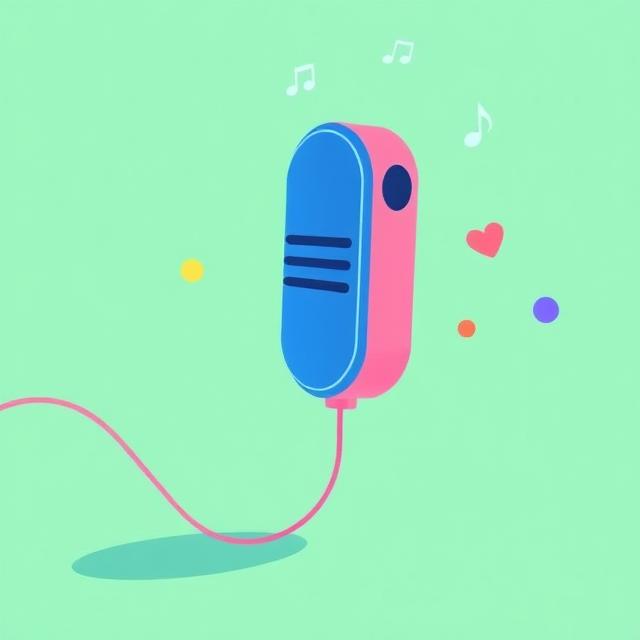
Key Benefits of Using AI Music Prompts by Genre
When you use AI music prompts by genre, you get several major advantages:
- More authentic genre sound in your AI-created music
- Better emotional impact that matches what you want to express
- Greater control over instruments and how they’re arranged
- Better song structure that follows genre conventions
- Higher quality output for professional projects
By using AI music prompts that are specific to your chosen genre, you can create music that sounds more like it was made by human musicians who understand that style. This makes a huge difference whether you’re creating background music for videos, developing song ideas, or exploring new musical directions.
How to Create Effective AI Music Prompts by Genre
To create good AI music prompts by genre, you need to know what makes each music style special. Here are the key parts to include:
- Mood/Feeling – Tell the AI what emotion fits the genre
- Speed and Rhythm – Mention typical beat patterns
- Instruments – List instruments common in the genre
- Production Style – Note special sound effects
- Song Structure – Mention typical song parts
- Artist Examples – Name artists that represent the sound you want
Let’s look at how to write prompts for popular music genre AI prompts:
Pop Music Prompts
Pop music prompts should focus on catchy melodies and clean production. Today’s pop music combines electronic and acoustic elements with clear vocals.
Try these pop music prompts:
- “Create a summer pop track at 105 BPM with bright ukulele, finger snaps, and an uplifting chorus about new beginnings. Add light tropical percussion and a whistling hook after each chorus.”
- “Generate a moody pop ballad starting with solo piano, building with subtle strings, and featuring emotional vocals with slight vibrato. Include a bridge with vocal harmonies and a key change for the final chorus.”
For more ideas, check out AI in pop music.
Hip Hop Prompts
Hip hop prompts need to specify beats, bass weight, and rhythm patterns. Creating authentic hip hop beats with AI prompts means being specific about the style you want.
Try these prompts:
- “Create a melodic trap beat at the Drake tempo of 72 BPM with melancholy piano chords, 808 slides that bend downward, snappy clap on the 3, and hi-hat patterns that vary every 4 bars. Add atmospheric pad sounds in the background.”
- “Generate a 90s boom bap beat at 88 BPM with dusty vinyl samples, punchy kick drum, snare on 2 and 4, and jazz horn samples. Include subtle bass that follows the kick pattern and occasional DJ scratch effects between sections.”
- “Make a West Coast G-funk beat at 95 BPM with a bouncy synthesizer bassline, clap-snap combo on beat 2, minimal drum pattern, and high-pitched synth leads inspired by 90s Dre production. Add subtle vocoder elements in the chorus.”
- “Create a UK grime beat at 140 BPM with sharp synth stabs, heavy sub-bass hits, skippy hi-hat patterns, and aggressive snare rolls every 8 bars. Include electronic sound effects with heavy reverb between phrases.”
- “Generate a lo-fi hip hop beat at 80 BPM with filtered jazz piano sample, slightly off-beat drum pattern, tape hiss ambience, and deep bass notes that only hit occasionally. Add rain sounds in the background and subtle vinyl crackle throughout.”
Learn more about using an AI beat maker for hip hop.
Rock Music Prompts
How to write effective rock music AI prompts comes down to describing guitar sounds, drum energy, and band dynamics.
Try these rock prompts:
“Create a southern rock anthem with dual lead guitars playing harmonized lines, steady driving drums with double bass kicks, piano accents during the chorus, and a breakdown section featuring slide guitar solo.”
“Generate a modern alternative rock track with clean verses using palm-muted guitars, explosive choruses with heavy distortion, electronic elements blended with the drums, and vocals that shift between whispered verses and powerful chorus melodies.”
EDM and Electronic Music Prompts
EDM music generation prompt techniques should mention synth types, bass sounds, and beat patterns. Always include the BPM (beats per minute) in electronic music prompts.
Try these prompts:
- “Create a deep house track at 124 BPM with subby rounded bass on every beat, crisp hi-hats playing 16th notes, subtle Rhodes chord stabs with delay, and filtered female vocal samples that build before each 8-bar transition.”
- “Generate a future bass song at 150 BPM with supersaw chord stacks on the drop, trap-influenced hi-hat patterns, heavy sidechained bass, and pitched vocal chops that create a melodic hook. Include a half-time breakdown section after the second drop.”
- “Make a techno track at 132 BPM with driving 4/4 kick, offbeat closed hi-hats, rumbling sub-bass that varies subtly, and acid-style 303 sequences that slowly open up the filter throughout the track. Add industrial percussion samples and plenty of reverb.”
Explore more about AI in electronic dance music.
Country Music Prompts
Country music AI lyric generation strategies should focus on storytelling, acoustic instruments, and traditional structures.
Try these prompt:
“Generate a modern country-rock crossover with acoustic rhythm guitar, electric lead guitar licks, steady driving drums, and bass that follows the kick pattern. Add banjo accents in the chorus and lyrics about overcoming hard times.”
Classical and Orchestral Music Prompts
Classical music prompts should specify instrument sections, emotional themes, and composition style.
Try these prompt:
“Generate a minimalist orchestral composition with repeating patterns in the strings that slowly evolve, sparse woodwind accents, occasional piano clusters, and gradual layering of instrumental voices over a steady pulse.”
Learn more about AI in classical and orchestral music.
Ambient and Experimental Music Prompts
Ambient music focuses on texture, atmosphere, and subtle progression rather than traditional song structures.
Try these prompts:
- “Create a gentle ambient track with slowly evolving synthesizer pads, occasional piano notes with long decay, subtle field recordings of forest sounds, and no percussion. Focus on creating a healing atmosphere with gradual timbral changes.”
- “Generate a dark ambient piece with deep drone layers, distant metallic sounds processed with reverb, occasional whispered voices, and slowly pulsing low frequencies that come and go throughout the track.”
- “Make a generative ambient composition with randomized bell-like tones falling over sustained chords, granular textures created from processed nature sounds, and subtle modular synth bleeps that occur at irregular intervals.”
- “Create an ambient-jazz fusion with heavily processed electric piano, brushed cymbals with extreme reverb, fretless bass notes that appear occasionally, and saxophone phrases transformed through delay and pitch shifting.”
- “Generate an ambient soundscape based on water themes, with hydrophone recordings, synthesized bubble sounds, flowing pad sounds that mimic ocean currents, and processed harp glissandos that represent light reflecting on water.”
Explore AI in ambient and experimental music for more ideas.
Real Applications and Use Cases
AI music genre creation is already being used in many real-world situations:
Professional Artist Collaboration
Paul McCartney used artificial intelligence composition tools to extract John Lennon’s voice for a new Beatles track. This shows how established artists are using AI to create new music with legacy elements, according to music industry research.
New Business Models
Singer Grimes created a new approach by offering creators 50% of royalties when they use her AI voice. This sets up a template for artist-friendly AI music by genre monetization, as noted in this music technology report.
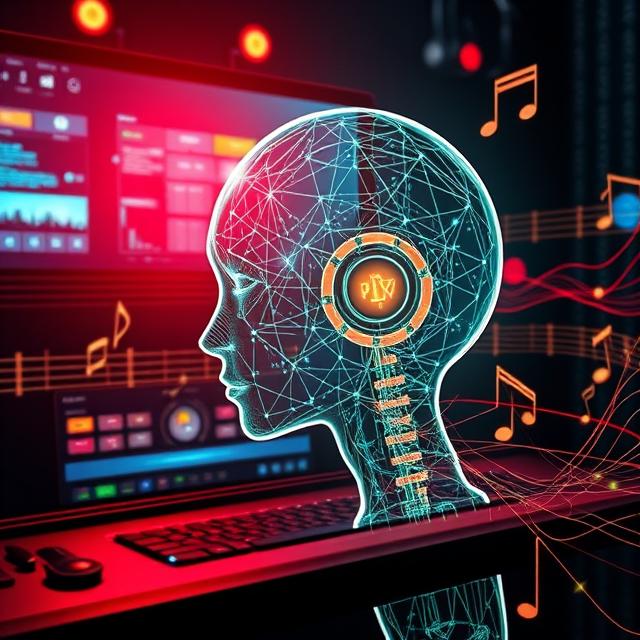
Functional Music Creation
Apps like Endel and Brain.fm use machine learning music creation to generate adaptive soundtracks that change based on what you’re doing or the time of day. These apps create personalized music for work, relaxation, and focus.
Quick Song Development
Tools like Udio let songwriters quickly try ideas across multiple genres before studio recording. This saves time from concept to demo, according to music production experts.
AI Music Generation Platforms and Tools
Several easy-to-use platforms let you try genre-specific AI music generation:
User-Friendly Tools
- Soundverse – Offers both text-to-music and custom lyric options
- Udio – Provides advanced vocal features with genre-mixing options
- Suno – Delivers full songs from descriptive prompts
- Google MusicFX – Creates music from text descriptions
Professional Production Tools
- Stable Audio – Offers high-quality audio with precise genre controls
- Hydra II – Provides detailed instrument customization
- CassetteAI – Specializes in vintage-inspired genre sounds
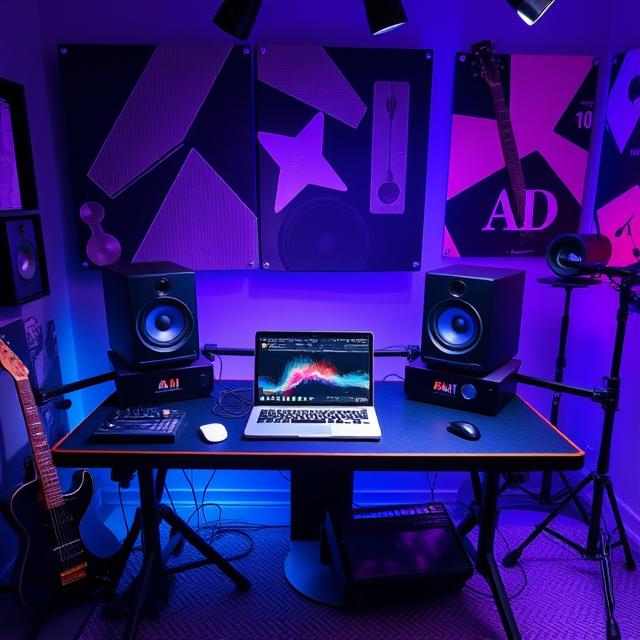
Advanced Music Production With AI
When you’re ready to take your AI music further, consider these advanced techniques:
Remixing and Mashups
Learn how to use AI to create remixes and mashups by separating songs into parts and recombining them.
AI Mastering
Polish your tracks to professional quality with AI music mastering tools that analyze and enhance your music.
Future Directions for AI Music Prompts by Genre
As generative music technology improves, we can expect:
- More detailed control over genre-specific elements
- Sub-genre options with time-period accurate sounds
- Integration with traditional music software
- Artist-specific models for personalized genre styles
Learn more about the overall impact of AI in music.
Conclusion
AI music prompts by genre are powerful tools for creating better AI-generated music. By understanding what makes each music style unique and learning how to write clear prompts, you can create music that sounds more authentic and professional.
Whether you’re making background music for videos, developing song ideas, or exploring new musical directions, genre-specific prompting helps you get better results from AI music tools.
Check out AI music learning resources for more tips and techniques.
